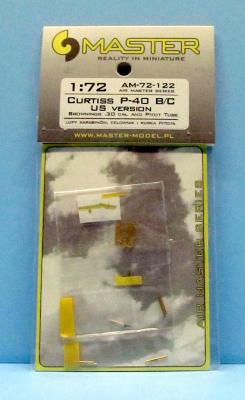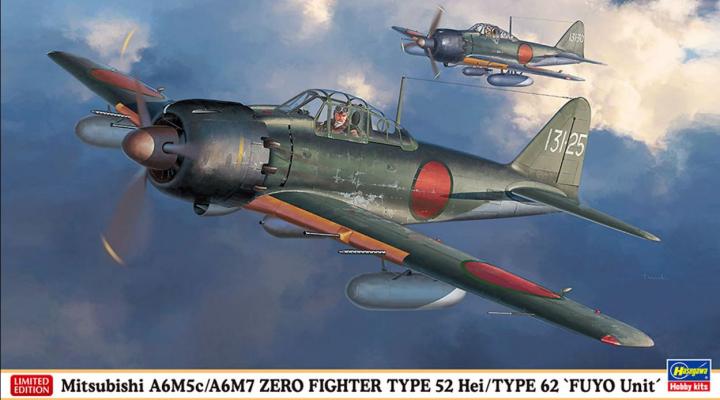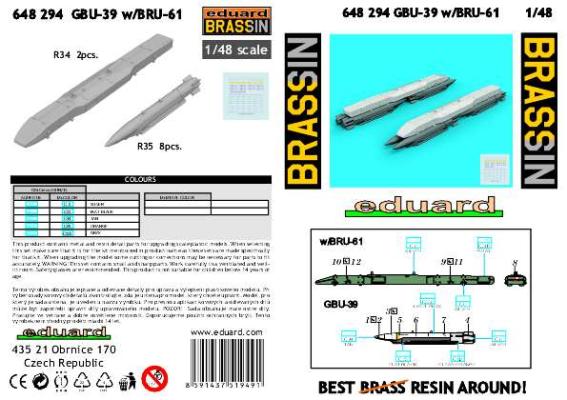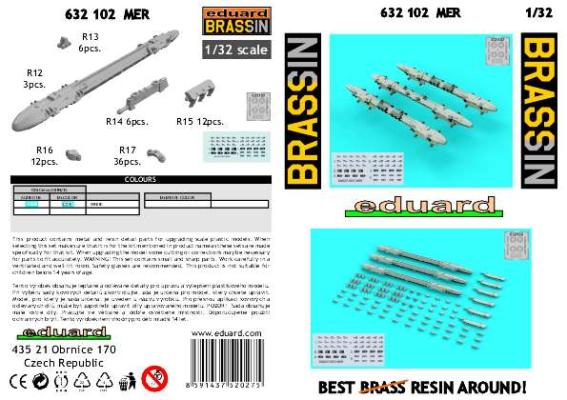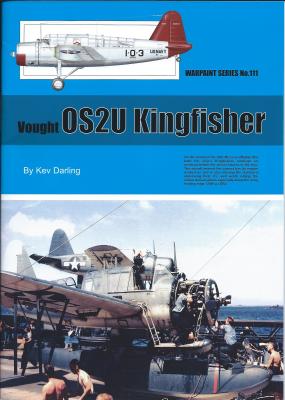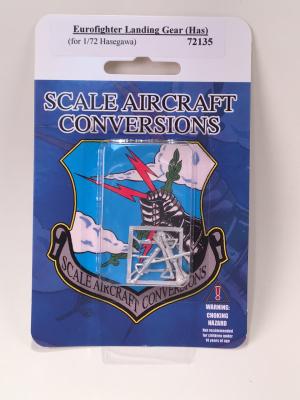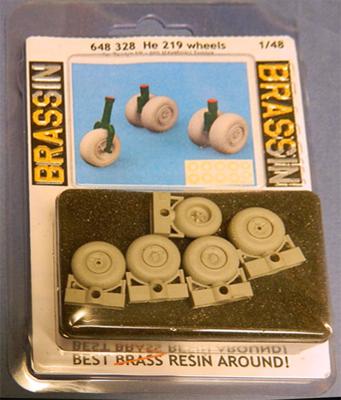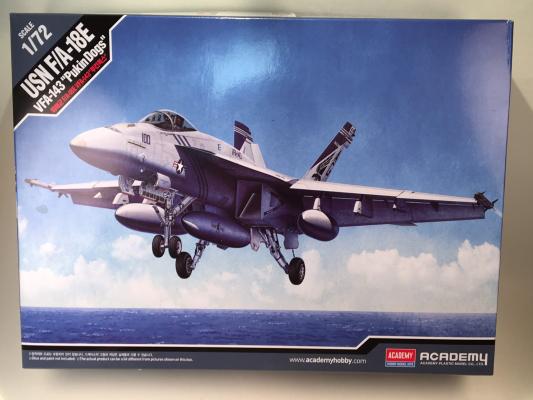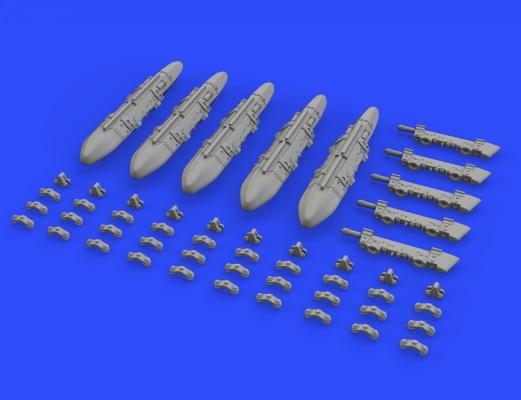There are many firms who make and market brass aircraft accessories for the modeler, but none seem to match the skill and delicacy that is routinely exhibited by Master Model from Poland. One of the latest gems is the set for the Curtiss P-40 B/C US version in 1/72 scale. In this set one gets the following: four .30 cal MG barrels for the wings, two .50 cal cowling blast tubes, one pitot tube, two resin pitot heads, one front bead sight, and four photoetch rear ring sights. Master-Model does not recommend any one P-40 kit so for this review, so I used the latest Airfix kit the Curtiss Hawk 81-A-2 which I had.
The Mitsubishi A6M7 Type 0, according to Wikipedia, is based on the A6M6, which in turn is based on the A6M5c. The bottom line for this variant of the venerable Zero is that it was designed for a role as a fighter bomber. It was fitted with 3 - 13.2mm Machine guns (1 in the fuselage and 2 wing mounted) as well as 2 wing mounted 20mm canons. Additionally, it has hard points to carry various combinations of external bombs and or external fuel tanks.
One of the great things I have always found about modeling is that I never fail to learn something here and there. This set of the GBU-39 and the BRU-61 bomb rack caught my attention as, frankly, I had never heard of it. A quick Google and I was hooked and volunteered to review the set.
The GBU-39 Small Diameter Bomb is just that, a smaller 250 lb. weapon which is a precision guided glide bomb. Its intent is to allow aircraft to carry more weapons and destroy more targets. Think of it this way, a plane has four pylons for example. At a bomb per pylon, that’s four total. Using adapters, at two bombs per pylon, eight targets can be destroyed. Using the GBU-39 with BRU-61 rack, the plane can carry sixteen bombs and destroy sixteen targets. Adding to that, the effective range of this weapon is over 50 miles and it can use multiple targeting systems. To get that long distance, it deploys wings to allow a glide range of over 50 miles. Interesting stuff.
The MER (Multiple Ejector Rack) is a weapons unit which attaches to an aircraft pylon and can hold up to six individual weapons such cluster bombs or standard dumb bombs. The US Air Force stopped using these in the early 1990’s but many pictures can be found with these attached to B-52’s, F-4’s, A-4’s, F-105’s, etc. In other words, they were used frequently. Many model kits have a simplified version of this but Eduard has upped the game with this release in 1/32nd scale.
Eduard set comes with three complete MER’s and a total of 78 cast resin parts in their usual gray resin. There is also some wire to add for the connections also and a full set of markings to go with each one.
Without question, the F-14 was the Navy's finest long range interceptor ever built. Now retired, the Grumman built F-14 was the best of all Grumman “cats”. It had firepower, speed and presence with its wings fully swept forward or aft. The F-14 job was fleet defense and it used the long range Phoenix, mid-range Sparrow and the short range Sidewinder to accomplish this task, it even had a 20mm Vulcan cannon as a back up. The F-14 came in three variants; the F-14A, the F-14B and lastly the F-14D. The ejection seats used the A and B marks was the Martin Baker GRU-7A. Quickboost has recently made and offers a resin pair of these seats and they are recommended for the Hasegawa kits. These seats are finely cast with no flash or holes.
This book covers the Vought OS2U Kingfisher. Number 111 in the very familiar Warpaint series by Guideline, this book follows their tried and true format. Beginning with the discussion of the prototype the book then moves into production models and service. All variants are covered including the XOS2U-4 and those made by the Naval Aircraft Factory.
Next, comes the extensive overseas service by the Kingfisher. Serving with Australia, throughout Latin America and Russia, brief coverage of the numbers involved and their use is given. This is followed by a detailed description of the aircraft, all its specifications, and fittings.
The largest section covers the use of the aircraft in war time service with the USN shipboard, USMC use and those based on seaplane bases and island use. The book concludes with a list of kits, decals, and aftermarket that are available and some cockpit detail photographs.
The set is designed as drop in replacements for the kit landing gear parts for Hasegawa’s recent 1/72 scale Eurofighter/Typhoon. The set consists of 6 white metal parts, a nose gear strut, two main landing gear struts, the nose gear retraction strut and two retraction struts for the main landing gear legs.
The Tamiya Heinkel He 219 1/48th scale kit has been around for a long time, and in my opinion remains a great kit. I built one several years and was quite pleased with the fit, detail and ease of assembly. I was fortunate enough to obtain a second kit in our local club raffle and began the search for all the "necessary" aftermarket accessories to meet my personal taste. Up to this time the only resin wheels available were the True Details wheel which I used on my first build. I found that CzechMaster offers a set of wheels, cockpit interior and canopy, which may be more than some modelers may need.
When the opportunity arose to review the Eduard version I quickly volunteered and was rewarded with an email indicating the set was mine.
While many other kits of the F/A-18E have been released in 1/72, Academy’s recent release is a continuation of its recent focus on enticing new people to the hobby. It is not a snap-tight kit with all the negative connotations that often has, nor is it a “normal” model kit. Like several of its other releases last year and this year, this kit is for the most part a push-fit kit, however, it showcases some of the best model engineering I have seen as many joints where the parts fit together are exquisite and most of them vanish once assembled.
The triple ejector rack (TER) has been used for many years and is a weapons suspension unit that attached to an aircraft pylon and allows for three weapons to be carried on that pylon. The United States has used TERS since the Vietnam War and they still a common sight on US aircraft along with many NATO air forces. The bombs are attached to the TER by mounting lugs and are stabilized by adjustable sway braces on the TER.
Eduard has produced a resin set which includes part to make 5 TER’s in 1/32nd scale. The set is made of 50 parts of wonderfully cast resin and a small photoetch fret. Full color instructions and full markings are also included.

